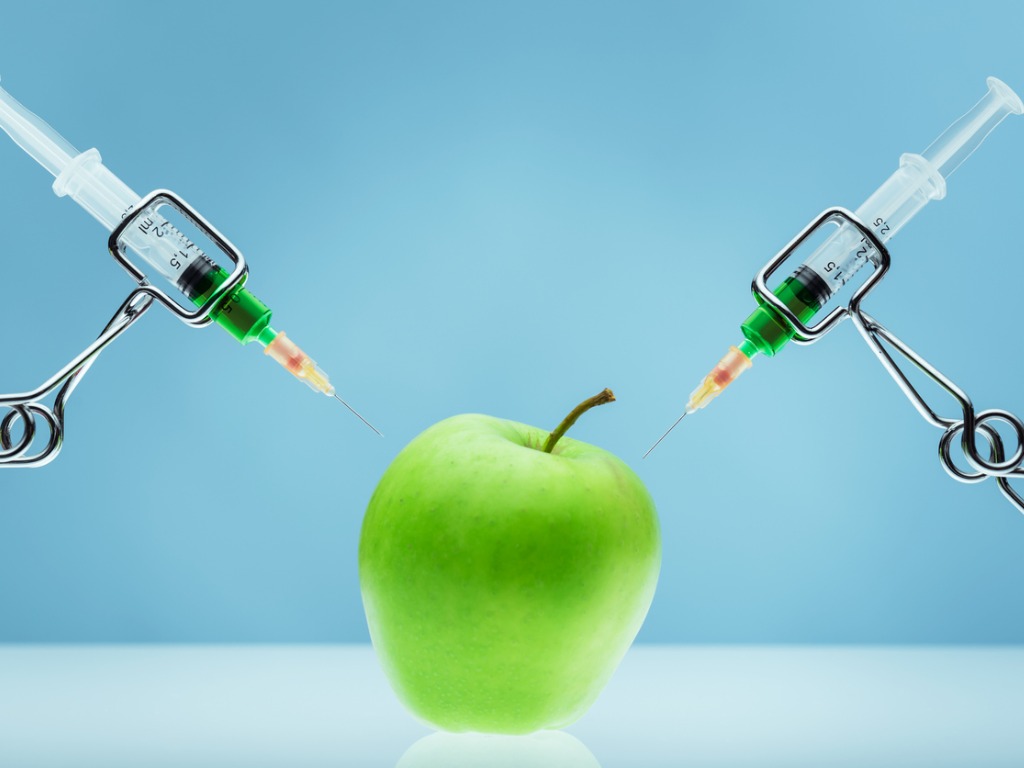A couple of years ago I was blessed to work with amazing people and scientists, including Pete Myers, a pioneer in research on the impacts of endocrine disruption on human health. This is when I discovered the world of EDCs (endocrine disrupting chemicals), amongst other things. A topic not much known to the general public at the time. EDCs are pernicious extrinsic body hackers worth getting rid of. When you do so, you might see amazing health improvements where you didn’t expect to.
During this period, I was dealing with a supposedly incurable autoimmune disease. Throughout my reading and understanding of scientific research on the subject, it became obvious to me that if my endocrine system was being hacked with endocrine disruptors (which it definitely was), it would make sense that my immune system would become dysfunctional and turn against its own body. Consequently, it led me to making simple changes in my daily life, which had a gigantic impact on getting my health back. So let’s see what it’s all about.
Endocrine disrupting chemicals are synthetic chemicals, i.e. totally man made. However, they are perceived and dealt with as if they were naturally produced by our body. Thus considered as proper signals being able to bind onto our cells.
A hormonal refresh
Let’s first have a look at our natural hormones. Our body produces and uses thousands of hormones all the time.
The main hormone producing glands are the pancreas, thyroid, pituitary, hypothalamus, pineal, adrenals, ovaries and testes. Even our gut produces hormones. Hormones are sent into the bloodstream as signals telling our cells what they are supposed to do. They regulate most of our body’s functions on top of being key to the nervous and immune system.
Hormones are also the main messages for the brain. As mentioned, they have a direct impact on the neural system, managing our mood and behaviour, the way we socialize, our attention and problem-solving capacity, including our intellectual capacities in general.
So, it’s worth giving it some thought when we know that EDCs are able to interfere with our endocrine system by mimicking a hormone, blocking the activation of the cell or disturbing the appropriate hormonal process, on top of altering the epigenetic code.
What about the dosage?
Our legal regulations are still based on the very old Paracelsus principle (from over 500 years ago…), which assumes that the dosage creates the poison. It makes the basic assumption that if we consume a toxic substance beneath a certain dosage there’s no risk. However, hormones and their chemical copycats don’t comply with this rule since they have an effect at an infinitesimal dosage. A question: if you were presented with two glasses of water to drink: one contains only water, and the other glass contains water with only one drop of arsenic. Which one would you choose despite the dosage?
Dosage is one thing but “effects” or “chemical interactions” are another. Here are the four main ones:
Cocktail – or synergetic effect
When many substances are put together, whether they are inert or active, they have a greater effect than on an individual basis. Meaning that the level of an individual toxicant becomes greater when it’s combined to another. Think of a bully in the schoolyard. On his own, he might already be a nasty piece of work. Now think of what happens when many bullies band together? Indeed, there’s a group effect.
Also good to know, an inert substance can become active when combined with another substance. If we take it a step further: it has been shown that a metabolite, which is the degradation stage of a toxic molecule, can be more potent than the original toxic molecule itself!
Cumulative effect
This is the repeated exposition to a same molecule. We usually use many products over the day. Frequently the same chemical can be found in various products at a pseudo acceptable dosage. Nevertheless, at the end of the day, you will have accumulated the chemical dose present in each product and therefore gone way beyond what was supposed to be “acceptable.” Like the effect on your belly eating a slice, or the whole cake.
Window effect
The development stage of the baby in the womb, as well as childhood and adolescence, are the most sensitive periods where the body is under construction. Hormones play a crucial role for the development of the organs and the immune, nervous and reproductive systems. If endocrine disrupting chemicals intervene in these so-told vulnerable stages of life, the consequences can be immediate or appear later during adulthood. Anyhow, it’ll continue altering the functions of the child throughout his/her whole life.
Epigenetic effect
This is the modification or alteration of the gene expression when exposed to EDCs. Impacts of exposure are transmitted to the next generations when the germ cells are exposed (the germ cells are the source of sperm in males and eggs in females). So not only is the pregnant women exposed to EDCs, with the potential consequences for herself, but her fetus is exposed too. Nevertheless it doesn’t stop there. Female mammals (including people) are already forming the eggs of their future offspring at fetal stage. This means that on top of the fetus of the baby girl herself getting exposed, her eggs are also impacted. And so on, potentially for the next generations to come.
Almost all of these experiments were done by directly exposing the pregnant female, without new exposures to subsequent generations (but remember the fetus of the baby girl is already making her eggs). Apparently only one study realized that this wasn’t the real world. Because in the real world, the next generation gets a new exposure, as does every subsequent generation. And that experiment found that the effects got worse and worse in subsequent generations. Because exposures add up.
Cheer up! So you don’t think this is a depressing article on a matter you can’t escape, I want to reassure you that there are many easy ways to debug your body. I’ll go through them at the end. For now, let’s look at what EDCs can lead to.
Consequences are broad
EDCs are linked to:
- Hormone-dependant cancers (breast, prostate, testicles)
- Autoimmune diseases
- Uterine fibroid, polycystic ovary, endometriosis
- Metabolism disorders (diabetes, obesity – there are some obesogenic EDCs!)
- Drastic fertility drop and infertility
- Cardiovascular and neurological disorders, depression
- Alzheimer’s, Parkinson’s
In children it is linked to:
- Abnormal foetus development
- Congenital malformation (hypospadias)
- Early puberty
- Intellectual and learning disabilities, ADHD, autism
- Behavioural disorders
- Leukemia
Where are endocrine disrupting chemicals found?
They are in quite a few commonly used products, such as food, synthetic chemicals in cosmetics and house products, flame retardants (mainly used in fabrics so they don’t burn too fast in case of fire), the paint on your walls, roofs, water, toys and plastics.
Did you know that a standard European lettuce, tomato or cucumber contains in average 20 EDC pesticide residues? If on top of that you wash your hands with a chemical soap x times a day, shower, put makeup on, inhale a lovely fragrance in a room and heat up your meal in a plastic container, you will have hit an EDC jackpot in your body. As well as jumping with both feet into the cocktail and cumulative effects all in one day.
From scary to good news
After all this scary EDC biography, the good news is that we can all drastically reduce endocrine disrupting chemicals in our bloodstream by paying attention to some simple things.
Food:
Knowing that pesticides are a major source of EDCs, simply starting by paying attention to what you eat is an easy way to reduce your exposure. An encouraging example is a test on families switching from pesticides to organic food. Within only 6 days, it led to a reduction of 60% of trace of pesticides found in their organism, and it was up to 95% for some individuals.
Switch to ORGANIC wherever you can or go for local and seasonal products, which should have received less chemical treatments. Rinse well, soak in apple cider vinegar or peel non-organic fruits and vegetables.
Plastics:
We cannot avoid all plastics, and they are pretty useful too. However, some plastic is produced using phthalate or BPA. These are endocrine disrupters that leap into the food and water in contact with the plastic. BPA-free products are mainly marketing, since research found that they were still leaching out EDCs. Besides heat activates and increases the transfer of these chemical components. Therefore, it’s better not to ingest water of a plastic bottle left in the sun, a meal heated up in a plastic container or warm food left in it to cool down. Glass containers and glass or stainless steel bottles are easy alternatives. Also opt for food in glass containers or fresh rather than canned goods in contact with the plastic linage inside the can, that is plastered with endocrine disrupting chemicals.
Water:
As already mentioned, glass or stainless steel bottles are easy alternatives to plastic (on top of being more ecologically friendly!) Water filtration for your tap water is an efficient way of removing pesticides and other chemicals that common municipal water treatments don’t retain.
Kitchen:
Plastic kitchen wear can easily be replaced by wood or stainless steel. Or at least don’t allow your plastic ladle to leach its toxic chemicals by leaving it in the pot while preparing your nice home-made soup. When heated, non-stick cookware also releases chemicals into your food, increasing when the coating has deteriorated. There are plenty of healthier alternatives on the market here too.
Household and cosmetic products:
Whether it is detergents, toothpaste, shaving creams, deodorants, hair care products, menstrual care products, the same advice applies – choose organic where possible.
If you buy new furniture or do some painting, make sure you air the rooms out a lot to get rid of the floating particles.
Conclusion
There is a lot you can do to reduce your exposure. Your body is an extraordinary machine. Give it a good base to work with, even if it’s not 100%, and remove bugs where you can. It’ll give you a big thanks by showing how it can amazingly regenerate, cure and rid itself of whatever else shouldn’t be there.
A deeper dive into EDCs: Integrative Medecine Journal interview – Pete Myers, MD : Epigenetics and Endocrine Disruption
Follow on Facebook



